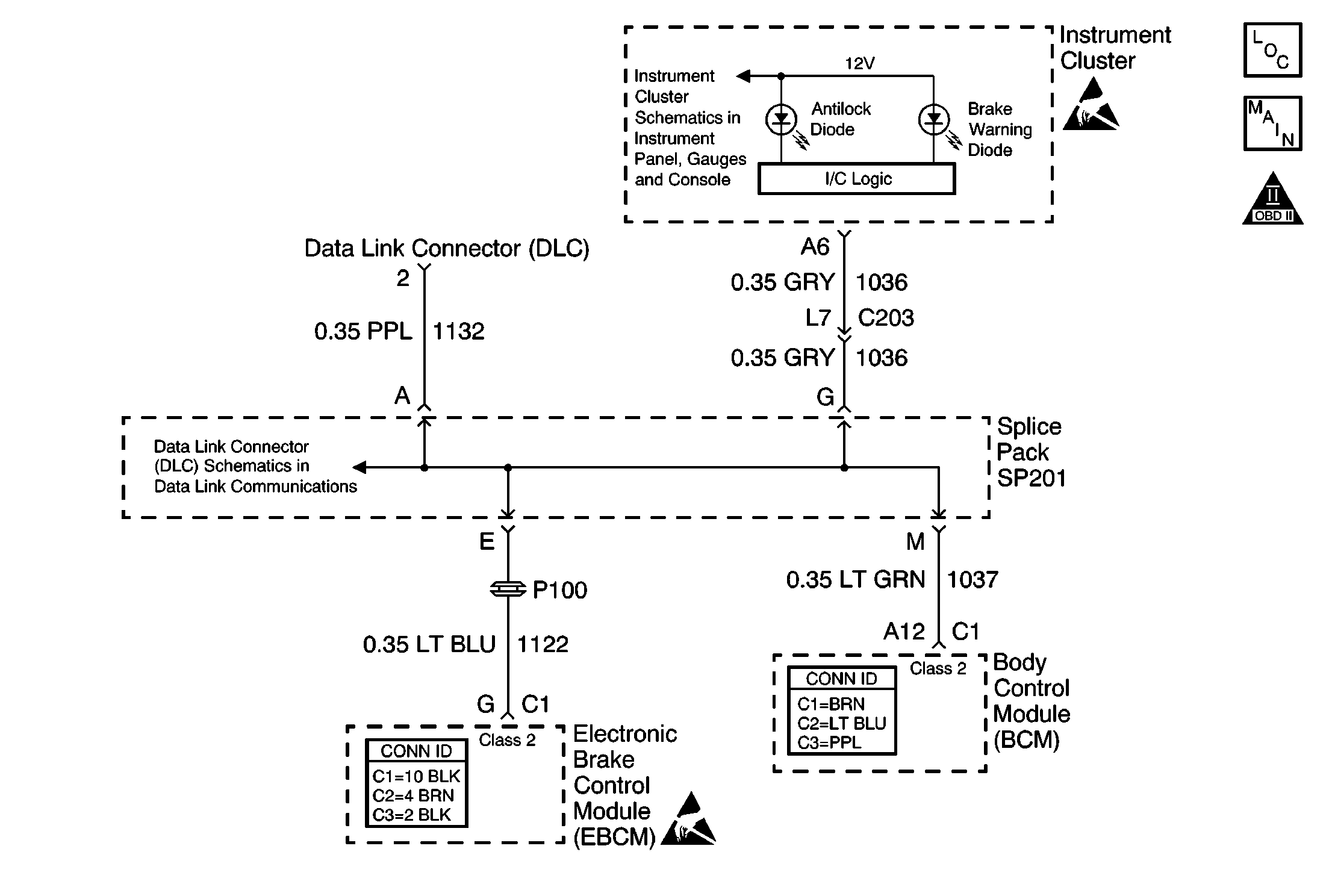
Circuit Description
The vehicle theft deterrent (VTD) system, called a passlock II system, is designed to prevent vehicle theft by disabling the engine unless the passlock lock cylinder is correctly engaged by a mechanical key. The passlock II system utilizes the following four components for theft detection:
| • | The lock cylinder |
| • | The ignition switch |
| • | The body control module (BCM) |
| • | The powertrain control module (PCM) |
When starting the engine, the PCM looks for a password from the BCM through the Class 2 Serial Data circuit. If the password is not recognized or not present, the PCM will disable the engine. If an incorrect or no password received, this indicates that the engine will start and stall immediately. THEFT SYSTEM telltale will flash on the IPC for approximately 4 seconds. If an incorrect or Disable Password Received, more than three invalid passwords are received, this indicates that the engine is disabled for at least 10 minutes and that the THEFT SYSTEM telltale will illuminate solid on the IPC for approximately 3 seconds then flash on the instrument panel cluster (IPC) for the 10 minutes.
After the vehicle has passed theft detection, the PCM will continue a normal engine operation. If the PCM loses the BCM communication within the same ignition cycle, the vehicle will continue to run on the following ignition cycles. This mode is called the Fail Enable Mode. Additional information can be found in the Passlock Theft Deterrent Systems.
Conditions for Setting the DTC
| • | Received a fuel disabled password from the BCM. |
| Or |
| • | An undecided password was sent from the BCM. |
Action Taken When the DTC Sets
| • | The PCM will record operating conditions at the time during which the diagnostic fails. This information will be stored in the Freeze Frame and Failure Records buffers. |
| • | A history DTC stores |
| • | Engine fueling is disabled by the body function controller (BFC). |
| • | The fuel system is disabled by the PCM. |
Conditions for Clearing the MIL/DTC
| • | A history DTC will clear after 40 consecutive warm up cycles without a fault. |
| • | A scan tool can clear the DTCs. |
Diagnostic Aids
Attempting to start the vehicle by bypassing the Passlock ll system or by substituting parts without performing the password learn procedure may set a DTC P1631 and a P1632.
If no password is received, a DTC U1064 and P1632 may be set.
An intermittent may be caused by a poor connection, a rubbed through wire insulation or by a wire broken inside the insulation.
Thoroughly check any suspected circuitry for the following items:
| • | Backed out terminals or improper mating |
| • | Broken locks |
| • | Improperly formed or damaged terminals |
| • | Poor terminal to wiring connections |
| • | Physical damage to the wiring harness |
| • | Corrosion |
Test Description
The numbers below refer to the step numbers on the diagnostic table.
-
The Powertrain OBD System Check prompts you to complete some of the basic checks and to store the Freeze Frame and Failure Records data on the scan tool if applicable. This creates an electronic copy of the data captured when the fault occurred. The scan tool stores this data for later reference.
-
The PCM may not have learned the new password. Refer to Password Learn Procedure portion of the service manual.
-
The scan tool can display whether or not the BCM has received and learned the password from the lock cylinder. If the password is not received, the reason the PCM set this DTC may due to a password that has not yet been learned due to a component being replaced, or a problem in the BCM or a VTD component.
-
Replacement PCMs must be reprogrammed. A reprogrammed PCM does not require the Password Learn Procedure to be performed. The password will be learned on the first ignition cycle. Reprogram the replacement PCM and perform the Crankshaft Position System Variation Learn Procedure.
-
A passlock theft deterrent, or BCM DTC being set indicates that a passlock II component may be malfunctioning.
-
If no DTCs were set and the BCM has not learned (received) a password from the ignition lock cylinder, the BCM may need to learn the password or may be malfunctioning.
-
If no malfunctions are present at this point and no additional DTCs were set, refer to Diagnostic Aids for additional checks and information.
Step | Action | Values | Yes | No |
|---|---|---|---|---|
Did you perform the Powertrain On-Board Diagnostic (OBD) System Check? | -- | |||
Was DTC P1626, or P1631 also set? | -- | Go to applicable DTC table | ||
3 |
Does the engine start and continue to Run? | -- | ||
Does the scan tool indicate that the passlock data is valid? | -- | |||
|
Important: The replacement PCM must be programmed. Replace the PCM. Refer to Powertrain Control Module Replacement/Programming . Is the action complete? | -- | -- | ||
Are any body control module (BCM) or passlock theft deterrent DTCs set? | -- | Go to applicable DTC table | ||
Refer to PASSLOCK Reprogramming Seed and Key in Theft Deterrent. Is the action complete? | -- | -- | ||
8 |
Does the scan tool indicate that this diagnostic Ran and Passed? | -- | ||
Check to see if any additional DTCs are set. Does the scan tool display any DTCs that you have not diagnosed? | -- | Go to applicable DTC table | System OK |
